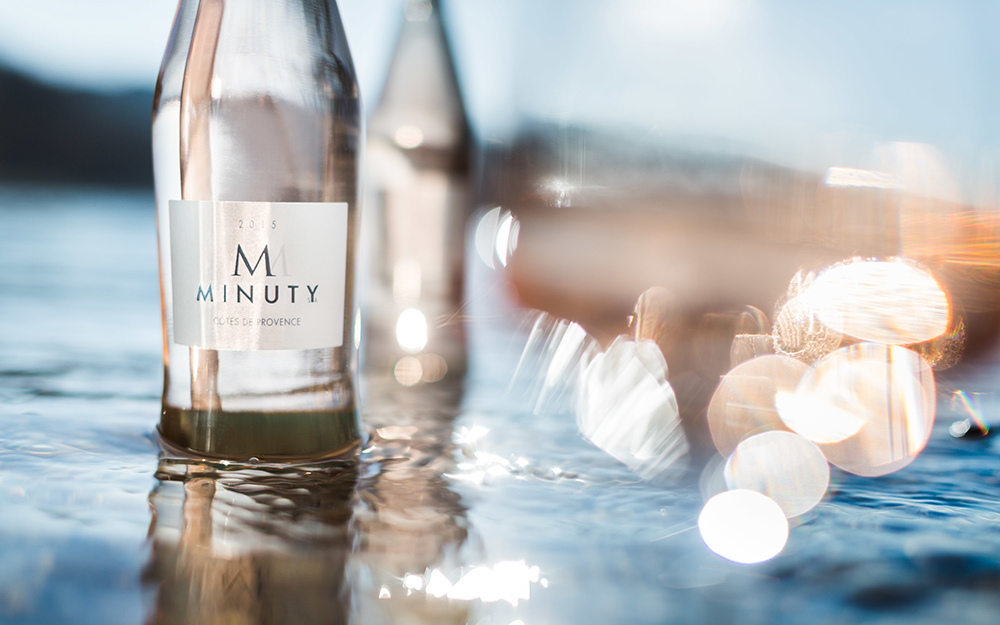
By Rick Riozza
Having spent five weeks throughout Europe this summer, it’s pretty hard to pick one area we enjoyed the most. But the main idea was to follow the famous wine regions to fully experience its total ambiance, and, to adequately write about it.
After a quaint stay in the city of Beaune in the Burgundy wine region, we headed to the South of France. Unexpectedly, when traveling south on the Autoroute along the Rhone River, we encountered so much stop and go traffic, that I had to turn off the motorway and take the more scenic route to Nice. I don’t recommend doing this detour unless you’ve got an additional five hours of drive time. But the sights were fantastic: such stirring rocky heights (this is the French Alps after all) but gorgeous gorges, valleys and river ways that we followed through a myriad of turns and curves.
But I was so beaten after such a full-throttle excursion that I missed appreciating entering the town of Nice. When thinking of Provence, the mind conjures up images of lavender fields, casting purple hues on rolling hills that match the sunsets. You think of the famous sun-drenched seaside towns of the French Riviera like Nice, Cannes, Saint Tropez, Monaco just to name a few. And the rosé wines produced around these areas have set the standard for all the new dry rosés we now see in our stores.
We actually stayed in Villefranche-sur-Mer which is a serene and beautiful seacoast town; Nice, on the other hand, has become a metropolis, packed with tourists and crowds. But no matter where you are in the south of France, the pink hues of glasses of rosés against the backdrop of the crystal blue waters of the Cote D’Azure—the French Rivera, are absolutely inviting and you want to just drench yourself with the local nectar.
With the all-pervasive smell of local herbs and the sea—every last little thing, including the style of the typically Provencal dwellings, the scene surrounds you while one appreciates the soft complex flavors of the area’s rosés.
Provence saw the first grapes planted in France, in about 600 BC, by the Greeks. Romans built on what the Greeks started, realizing 2,000 years ago that Provence had an ideal climate for producing wine: mild winters and long, warm summers which were not too hot thanks to the cooling winds. Obviously, due to its geography, it’s the oldest wine producing region in France.
With the combination of vineyards on the limestone hills and those long summer days, Provence produces red grapes ideal for rosé production such as Syrah, Cinsault, Mouvedre, and Grenache. One of the most predominant features that can be found in the wines made from this region is the unmistakable aromatic bouquet of lavender, juniper, thyme and rosemary—famously known as garrigue. Other defining notes can be that of wild strawberry, raspberry, wet slate, mint, salted watermelon and candied grapefruit.
Imports of rosé from Provence have doubled in 2016 to 1.27 million cases of wine which makes it almost an incredible 5000 percent from back in 2001 when the U.S. imported just 17,500 cases. And the amount of Provence rosé continues to soar in our American markets. Just check out the rosé wine aisle and see all of the brands, old and new, awaiting your interest.
One of my favorite rosés is from Family-owned Château Minuty, which sits nestled away on the St. Tropez peninsula in the South of France. It has produced quintessential Provençal rosé wines for three generations and is one of the last estates to harvest their grapes by hand. Further it has had a longstanding commitment to sustainable farming through biodiversity, land preservation and water management.
I remember first trying the M de Minuty at our famed Palm Desert Food & Wine event. It was the 2016 Rosé that had the classic Provençal pale, dry style showing wild strawberry flavors with a balanced acidity. The aftertaste was lightly perfumed, with herbal hints. It was impressive then and is impressive today.
Recently I tasted the 2018 “M” de Minuty, which is a vibrant dry Rose with a pale pink coral color. Fresh strawberry, orange peel and red currant aromas meld into flavors of nectarines and strawberries with accents of watermelon and minerals; medium body, bright acidity and a racy finish. Comprised of 50% Grenache, 40% Cinsault and 10% Syrah, it’s a well-balanced inviting rose that’s perfect for all occasions. It also comes bottled in a chic and gorgeous curvy bottle that sits elegantly on the table. You can find this wine at most markets and it’s reasonably priced at $17.
The other Rosé from Minuty is in a different category. The 2018 Minuty Rose et Or is a summer’s treat at $40. Sophisticated and structured, it is an adult rosé that’s quite versatile, appearing wonderfully as a chilled aperitif, able to serve as a refreshing wine for lunches and light dinners, or simply served to impress your guests. It’s very nuanced and elegant; it’s a sipper when contemplating past loves and life.
Immediately one notices its silvery pink color. There are light fruity aromas and subtle flavors of a tropical fruit medley. Its crisp, dry-yet-fruity medium body owns a long finish with notes of wild strawberry, honeydew melon, minerals, and pink pepper.
It’s such a delightful wine, but let’s face it: most of us aren’t quaffing this on a regular basis. Keep it in mind for that special event or meal. Cheers!












































